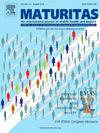Navigating skeletal wellness after breast cancer
IF 3.9
2区 医学
Q2 GERIATRICS & GERONTOLOGY
引用次数: 0
Abstract
Breast cancer is the leading cause of death in the female population. Hormone receptor-positive cancers are usually treated with surgery in combination with endocrine therapy. The latter is known to lower estrogen levels, contributing, therefore, to loss of bone density (BMD) and higher risk of fracture. Bone-modifying agents (BMAs) can regulate the bone-related adverse effects of cancer treatment. In premenopausal women, intravenous zoledronate effectively prevents bone loss. However, the evidence regarding its ability to reduce disease recurrence remains inconclusive. In postmenopausal women, denosumab demonstrates the most substantial evidence for fracture prevention, supported by one well-powered randomized controlled trial, but has not been shown to confer anticancer benefits. While bisphosphonates effectively prevent and reduce clinical vertebra fractures, their impact on overall fracture risk is unclear. In clinical practice, management of bone health in this group of patients starts with stratification for the risk of fracture. This can be done using the FRAX algorithm; measurements of bone mineral density can help to optimize stratification for individuals at higher fracture risk. Caution is advised when interpreting the results, as the FRAX algorithm has been considered to underestimate the true fracture risk in this population, given that the algorithm has not been adjusted for the effect of anti-cancer agents. Nowadays, clodronate, ibandronate, and zoledronic acid are recommended for bone protection in this group of patients, while denosumab is not. Further research is required to highlight the optimal BMA according to patient characteristics.
求助全文
约1分钟内获得全文
求助全文
来源期刊

Maturitas
医学-妇产科学
CiteScore
9.10
自引率
2.00%
发文量
142
审稿时长
40 days
期刊介绍:
Maturitas is an international multidisciplinary peer reviewed scientific journal of midlife health and beyond publishing original research, reviews, consensus statements and guidelines, and mini-reviews. The journal provides a forum for all aspects of postreproductive health in both genders ranging from basic science to health and social care.
Topic areas include:• Aging• Alternative and Complementary medicines• Arthritis and Bone Health• Cancer• Cardiovascular Health• Cognitive and Physical Functioning• Epidemiology, health and social care• Gynecology/ Reproductive Endocrinology• Nutrition/ Obesity Diabetes/ Metabolic Syndrome• Menopause, Ovarian Aging• Mental Health• Pharmacology• Sexuality• Quality of Life
 求助内容:
求助内容: 应助结果提醒方式:
应助结果提醒方式:


